| 8-1. | Clinical studies |
| ● | Open trial (before and after comparison) |
| ● | Age 24 - 61 (40s - 50s 77%) |
| ● | 26 subjects |
| ● | Collagen peptide 5 g/day, 10 weeks (70 days) |
| ● | Evaluation : Body composition analysis, 2-step test* (locomotive performance), Interview |
*2-step test:
An easy way to examine Locomotive syndrome, made by the Japanese Orthopaedic Association. By examining the step size and hight, evaluating the muscle strength, balance ability, and flexibility of the lower limbs.
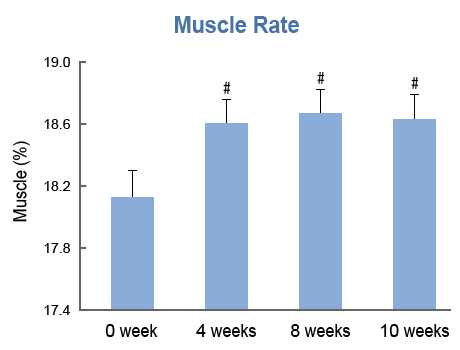
Mean±SE, ~{#} p<0.05 (vs 0week)
Increased 0.5%
Decreased pre-locomotive syndrome people (35 to 23%)
Going up and down the stairs got easier. Increased flexibility of the body. etc.
Reference:7th Conference of Japanese Society for Amino Acids Sciences, poster presentation
| 8-2. | Mice research data |
It was confirmed that Pro-Hyp (PO) and Hyp-Gly (OG) reached blood and muscle tissues in about 0.5 to 3 hours after ingestion of TYPE-M.
|
Reference:10th Conference of Japanese Society for Amino Acids Sciences, presentation
| 8-3. | Effect on muscle differentiation |
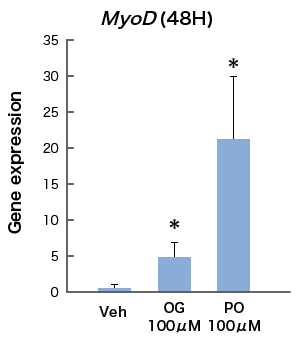
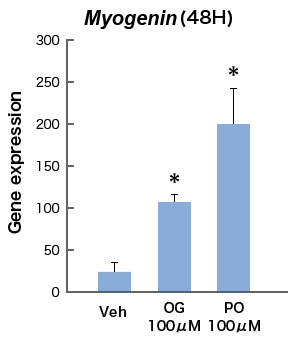
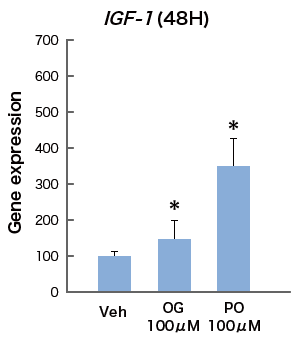
PO : Pro-Hyp、OG:Hyp-Gly
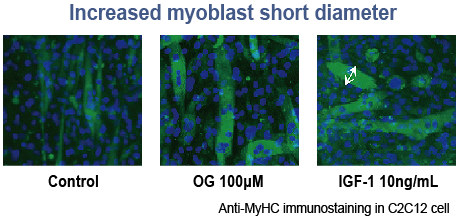
- Active ingredients PO and OG reach muscle tissue
- Expression of Myogenin, MyoD, and IGF-1 genes is upregulated via mTOR
- The short diameter of myoblasts becomes thicker
Reference: Kitakaze T, Sakamoto T, Kitano T, Inoue N, Sugihara F, Harada N, Yamaji R, The collagen derived dipeptide hydroxyprolyl-glycine promotes C2C12 myoblast differentiation and myotube hypertrophy, Biochem Biophys Res Commun., 478 (3) :1292-7, 2016






